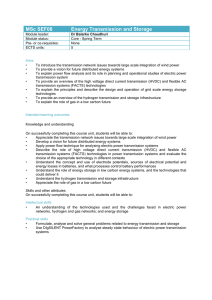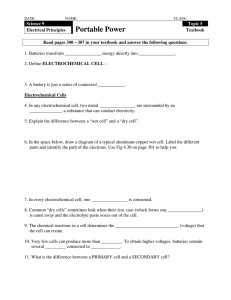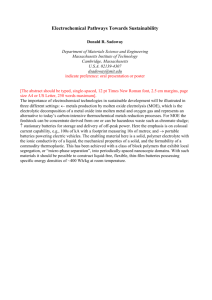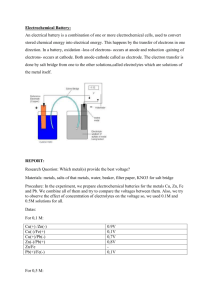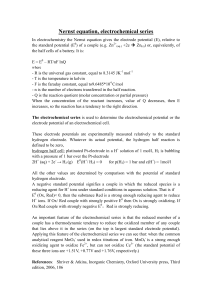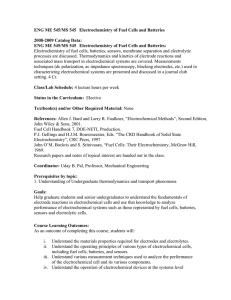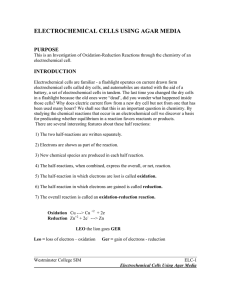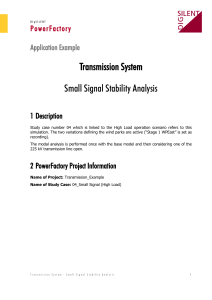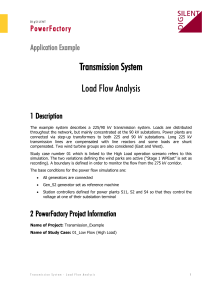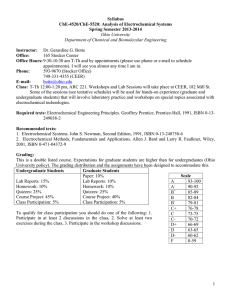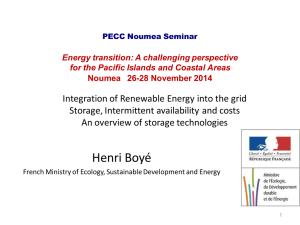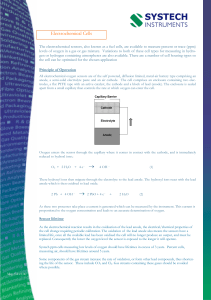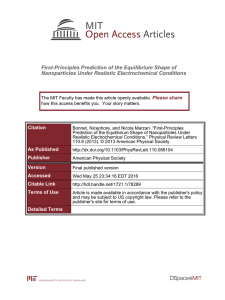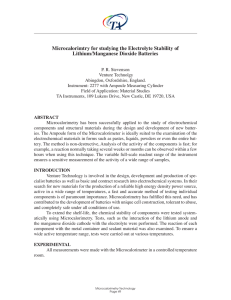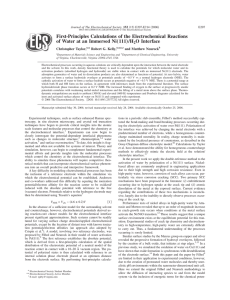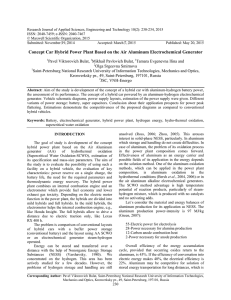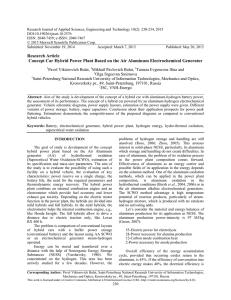Energy Transmission and Storage
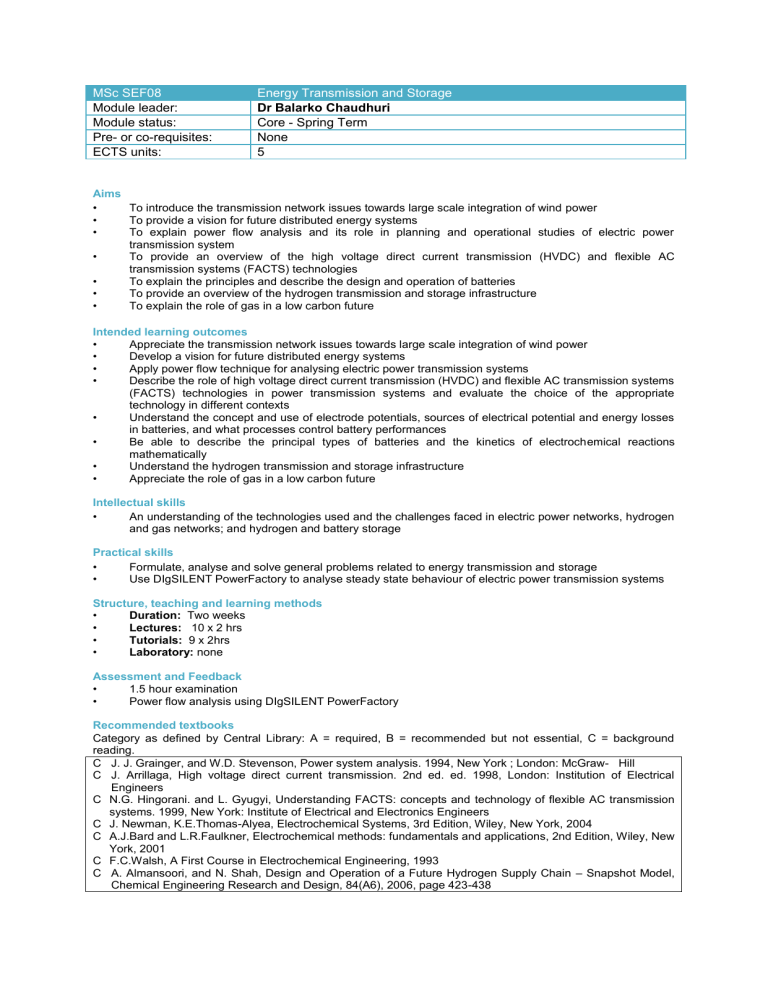
MSc SEF08
Module leader:
Module status:
Pre- or co-requisites:
ECTS units:
Energy Transmission and Storage
Dr Balarko Chaudhuri
Core - Spring Term
None
5
Aims
•
•
•
•
•
•
•
To introduce the transmission network issues towards large scale integration of wind power
To provide a vision for future distributed energy systems
To explain power flow analysis and its role in planning and operational studies of electric power transmission system
To provide an overview of the high voltage direct current transmission (HVDC) and flexible AC transmission systems (FACTS) technologies
To explain the principles and describe the design and operation of batteries
To provide an overview of the hydrogen transmission and storage infrastructure
To explain the role of gas in a low carbon future
•
•
•
•
Intended learning outcomes
•
•
Appreciate the transmission network issues towards large scale integration of wind power
Develop a vision for future distributed energy systems
Apply power flow technique for analysing electric power transmission systems
Describe the role of high voltage direct current transmission (HVDC) and flexible AC transmission systems
(FACTS) technologies in power transmission systems and evaluate the choice of the appropriate technology in different contexts
•
Understand the concept and use of electrode potentials, sources of electrical potential and energy losses in batteries, and what processes control battery performances
•
Be able to describe the principal types of batteries and the kinetics of electrochemical reactions mathematically
Understand the hydrogen transmission and storage infrastructure
Appreciate the role of gas in a low carbon future
Intellectual skills
•
An understanding of the technologies used and the challenges faced in electric power networks, hydrogen and gas networks; and hydrogen and battery storage
Practical skills
•
•
Formulate, analyse and solve general problems related to energy transmission and storage
Use DIgSILENT PowerFactory to analyse steady state behaviour of electric power transmission systems
•
•
Structure, teaching and learning methods
•
•
Duration:
Lectures:
Two weeks
10 x 2 hrs
Tutorials: 9 x 2hrs
Laboratory: none
Assessment and Feedback
•
1.5 hour examination
• Power flow analysis using DIgSILENT PowerFactory
Recommended textbooks
Category as defined by Central Library: A = required, B = recommended but not essential, C = background reading.
C J. J. Grainger, and W.D. Stevenson, Power system analysis. 1994, New York ; London: McGraw- Hill
C J. Arrillaga, High voltage direct current transmission. 2nd ed. ed. 1998, London: Institution of Electrical
Engineers
C N.G. Hingorani. and L. Gyugyi, Understanding FACTS: concepts and technology of flexible AC transmission systems. 1999, New York: Institute of Electrical and Electronics Engineers
C J. Newman, K.E.Thomas-Alyea, Electrochemical Systems, 3rd Edition, Wiley, New York, 2004
C A.J.Bard and L.R.Faulkner, Electrochemical methods: fundamentals and applications, 2nd Edition, Wiley, New
York, 2001
C F.C.Walsh, A First Course in Electrochemical Engineering, 1993
C A. Almansoori, and N. Shah, Design and Operation of a Future Hydrogen Supply Chain – Snapshot Model,
Chemical Engineering Research and Design, 84(A6), 2006, page 423-438
